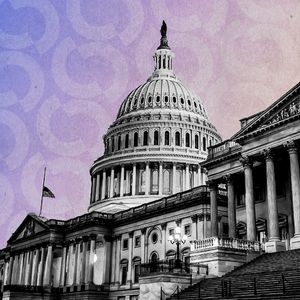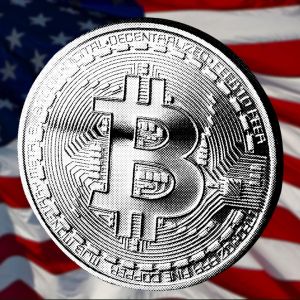Summary I argue that Bitcoin is more likely to mature as a global reserve asset rather than a global currency, due to its deflationary nature and user behavior of holding rather. On-chain data shows declining liquid supply, stagnant transactions, and a decrease in active addresses, supporting the view that Bitcoin is not being used as a daily transaction medium. Historical events, like the 2018 Bitcoin Cash hard fork, reflect the community’s preference for Bitcoin as a reserve asset over a global currency, reinforcing my thesis. Despite some risks, including the unlikely scenario of a hyper-bitcoinized world, I remain bullish on Bitcoin as a high-risk asymmetric bet with significant upside potential as a global reserve asset. In my last article , I argued how Bitcoin ( BTC-USD ) represented an asymmetric bet with an expected value between $40,000 and $100,000 per Coin, and a potential upside of $650,000 per coin. A few readers reached out, arguing how my bull case was relatively modest, as Bitcoin could mature to a far larger extent than “simply” replacing gold. In this new article, I will deep dive on the reasons why I see Bitcoin maturing as a potential global reserve asset, but not as a global currency. I will present my case by analyzing Bitcoin’s technical properties, recent on-chain data and its history. Thesis: all points at Bitcoin potentially maturing as a global reserve asset - not a global currency A key debate in the Bitcoin community concerns whether Bitcoin should be considered a new type of global currency, a reserve asset, or both. I am firmly convinced Bitcoin, at its current stage, is going to play a role as a potential global reserve asset. Conversely, I do not see it as maturing into a global currency used for frequent commercial transactions. My rationale is primarily based on Bitcoin’s scarcity, which makes it deflationary. Basic macroeconomic theory suggests that a deflationary currency is not ideal for daily transactions, as people tend to hoard money when they expect it to appreciate in value over time, reducing their willingness to spend. More on the principles behind this human behavior later in the article. My perspective is further supported by on-chain data showing that Bitcoin’s liquid supply has been declining since 2021, indicating in my view that users are increasingly choosing to "HODL" rather than spend. Additionally, metrics like the number of daily transactions and active Bitcoin addresses have been stagnant or declining for the past few years, reinforcing my view that Bitcoin is not becoming a global payment system or currency. Finally, Bitcoin’s history shows that the community has largely rejected the notion of Bitcoin as a primary global currency. The 2018 Bitcoin Cash hard fork, which aimed to position itself as a currency for everyday transactions, has since lost relevance compared to Bitcoin and now competes with numerous altcoins in the global payment space. However, I don’t see these trends as bearish for Bitcoin. On the contrary, I continue to view Bitcoin as an asymmetric bet on becoming a new global reserve asset, consistent with my previous thesis. For this to materialize, widespread mass adoption is unnecessary—only a few large institutions need to adopt and utilize Bitcoin. Clarifying what I mean with “reserve asset”, “currency” and “reserve currency” Before developing my thesis, I think it’s important to clarify some of the terminology I am going to use in this article. I define “reserve assets” as financial instruments that are stored by governments or central banks as part of foreign reserves. Type of reserve assets include gold and other precious metals, governmental bonds as well as fiat currencies, such as the US dollar. My definition of currency is a system of money that is used as a medium of exchange within an economy. In other terms, a financial instrument used for frequent commercial transactions between parties. I do not consider fiat currencies held as reserve assets by central banks as part of my definition of “currency”. Rather, I consider them a type of reserve asset. I see Bitcoin playing a role as a global reserve asset, partially replacing assets such as gold and the US dollar in its function of reserve currency, held by Central Banks worldwide. I do not see Bitcoin substituting currencies in their role as medium of exchange for daily commercial transactions. A deflationary currency is a bad currency (and a quick defense of Keynesian theory) Bitcoin has many characteristics that, in my view, make it technically a great reserve asset: durability, divisibility, fungibility, portability, verifiability and scarcity. It is exactly the latter characteristic, its scarcity, that I think makes Bitcoin inadequate as a global currency. A scarce asset tends to increase in value relative to other assets. That’s exactly what happened with Bitcoin: its value in US dollar (and any other currency) has increased dramatically since its conception and launch in 2009. Basic macroeconomic theory suggests deflation is a difficult phenomenon to face, as consumers tend to refrain from spending if they expect their currency to increase in value over time. This, in turn, creates issues with the broader economy as a large part of GDP is tied to consumer spending. Many people in the Bitcoin and crypto world reject Keynesian macroeconomic theory. For this reason, I want to spend a few paragraphs explaining why Keynesianism is often misunderstood by the crypto community and how its fundamentals - such as its rejection of deflation - are indeed solid and apply to Bitcoin. First of all, I believe many people associate Keynesian economics with uncontrolled public spending, strong government interventionism and a plea for high, sustained inflation. This is simply not true, as Keynesian economics argues in favor of fiscal discipline in times of economic expansion and disinflation (which is a reduction of the rate of inflation, not a reduction in price levels). Strong government spending is only recommended in times of crisis and for limited periods of time. The idea is the government should step in to absorb economic shocks, not run large deficit and increase spending at a time of economic expansion. Governments around the world at the moment are not practicing fiscal discipline, in my view - something I covered in a recent macro piece. On the contrary, I think they have resorted to sustained government spending and currency debasement as a way to avoid addressing structural issues. This is, however, far from something recommended by Kenesian theory. Another element that I think it’s often misunderstood about Keynesian theory relates to what it is based on. Fundamentally, Keynesian economics simply bases its assumptions on human behavior. Ultimately, whether or not readers agree with Keynes, the assumption that deflation is bad is rooted in basic human behavior. I believe it is reasonable to assume that people would not be willing to part ways with an asset, if they expect said asset to double in worth in one year time. I find this assumption to be difficult to disprove, whether or not that asset is a currency or a rare mineral, and regardless of the macroeconomic implications of people not spending their money. This is the fundamental reason why I do not see Bitcoin maturing into a currency used for everyday transactions and commercial relationships. People are simply not willing to part ways with what’s potentially the scarcest, best asset that humanity has ever conceived to buy bread or pay for a vacation. On-Chain data shows Bitcoin is not being used as a currency Readers who are not convinced about Bitcoin being deflationary based on its implied scarcity and macroeconomic theory, might reconsider their position after looking at on-chain data. I see a lot of data pointing at how Bitcoin users are not leveraging the cryptocurrency for commercial transactions. Rather, Bitcoin users are increasingly stacking Bitcoin and moving it to cold storage, something I see as a behavior consistent with my thesis. This is showcased by the Liquid and Illiquid supply chart shown below - with liquid and highly liquid Bitcoin fundamentally stagnant from 2015 until 2021, and declining since that time. BTC Liquid vs. Illiquid Supply (Glassnode) Furthermore, Bitcoin is disproportionately owned by a minority of people, known in the crypto community as “whales”. These users are not using Bitcoin for daily transactions, but rather are holding it in the hope it matures into a global reserve asset. The limited adoption of Bitcoin as a medium for daily transactions is evident in its transaction data, as shown in the chart below. From 2016 to 2022, the number of transactions remained largely stagnant, with a modest uptick in the past 2-3 years. Notably, even with this recent increase, the growth pattern is far from exponential. For a new global currency poised to replace fiat, one would expect a rapid, exponential rise in transaction volume. However, Bitcoin’s transaction growth has yet to meet these expectations. BTC: Number of Transactions (Glassnode) Even more interesting in my opinion, is the number of active Bitcoin addresses, which has been declining since its 2020 peak, as shown in the chart below. BTC Number of Active Addresses (Glassnode) This, in my view, shows that while transactions might be flat or slightly increasing, the number of users of the Bitcoin chain has actually been on a slight decline for the past six years. While the number of active addresses does not represent the exact number of users of the Bitcoin blockchain, I see it as a gauge of the adoption of Bitcoin as a technology. Bitcoin did experience a significant (almost exponential) increase in adoption in its first 8 years of life, but it has been stagnating since. This timing is not random, in my view, as it coincides with the hard fork between Bitcoin and Bitcoin Cash, something I will cover in a few paragraphs. Why I don’t see On-Chain data as bearish in the context of my thesis Readers might think that a slowdown in Bitcoin adoption is bearish for the future of the cryptocurrency. Personally, I see adoption metrics as irrelevant to the asymmetric bet of Bitcoin maturing into a global reserve asset. A global reserve asset needs to be adopted only by a handful of institutions to be considered as such. These include central banks, governments, pension funds and a few large institutional investors. I see a bullish case for Bitcoin looking like a few hundred global institutions holding Bitcoin in cold storage, or using centralized exchanges like Coinbase Global, Inc. ( COIN ) or financial instruments like the iShares Bitcoin Trust ETF ( IBIT ). In this context, metrics such as the number of active addresses or the number of transactions are relatively meaningless. Few institutions would only use few hundreds addresses to hold and (rarely) move their Bitcoin. Similarly to gold, as long as few institutions adopt Bitcoin as a reserve asset, that’s all it matters for my bullish scenario. Bitcoin Cash Fork: when the Bitcoin community voted against BTC as a currency Readers that are not familiar with Bitcoin and its history might be interested in knowing that Bitcoin has gone through a significant hard fork in 2018, with Bitcoin Cash “splitting” from Bitcoin. A hard fork in cryptocurrency is a major change to the blockchain protocol that creates two separate chains: one following the old rules and one following the new. It occurs when a network upgrade is not backward-compatible, often to add features or fix issues, requiring users to upgrade to stay on the new chain. In the case of Bitcoin, the 2018 hard fork happened exactly because the community couldn’t agree on Bitcoin’s ultimate use case. Developers behind the hard fork argued for increasing the block size limit from 32 MB to 128 MB, believing that accommodating more transactions per block would improve processing times. Their stance was that for Bitcoin to fulfill its original vision as a global currency, the blockchain needed to evolve to handle higher transaction volumes efficiently. Since an agreement couldn’t be reached, developers ended up performing a hard fork and creating Bitcoin Cash , a "spinoff" of Bitcoin. Bitcoin Cash has been the most successful hard fork of Bitcoin since its existence, with the cryptocurrency currently being in the top 20 by market cap. However, it still fell into irrelevance when compared to Bitcoin, and ended up competing with altcoins that position themselves as better ways of payment, such as, for example, Monero ( XMR-USD ). Today, Bitcoin Cash trades for less than $300 per Coin, compared to more than $58,000 for Bitcoin at the time of writing. I think the reason for the failure behind this project has a lot to do with the way Bitcoin matured in time, moving away from parts of the original ideas that its founder Satoshi Nakamoto outlined in its original white paper. Today, I think Bitcoin is seen as a global asset and hedge against inflation and currency debasement, not as a global currency anymore. Risk to my thesis: a hyper-Bitcoinized world would see BTC as a global currency I think the main risk to my thesis is the possibility of entering a hyper-bitcoinized world. This is a scenario where fiat currencies all but disappear, and Bitcoin becomes the hardest asset and the de facto global currency. I see this as plausible only in the event of a total collapse of existing institutions, such as governments, central banks, and the financial institutions that form the banking system. In such a scenario, Bitcoin might emerge as a global currency not due to its technical attributes making it a great global currency, but because of its scarcity and status as a global reserve asset. I view this scenario as bordering on science fiction and highly undesirable for humanity, as it would likely result in widespread poverty and a regression of hundreds of years in human progress. Furthermore, in such an apocalyptic setting, a currency dependent on the internet may struggle to function, potentially leading the world to revert to gold or other physical trinkets for daily transactions. Nevertheless, this is a scenario that is sometimes outlined by people in the Bitcoin community and I will concede that in such a situation, my thesis would prove incorrect - and Bitcoin would mature to the point of substituting all fiat currencies. Conclusion As a Bitcoiner, I remain a believer in fundamental Keynesian macroeconomics, which I find to be misunderstood and often unnecessarily criticized by the Bitcoin community. Keynes died in 1946, 25 years before the US abandoned the gold standard and 63 years before the introduction of Quantitative Easing. Keynes advocated for fiscal discipline in times of economic strength, something that I think has been forgotten by today’s politicians. I don’t think Keynes would approve of the way his theories have been weaponized or used to justify reckless government spending. Ultimately however, at its core Keynesian macroeconomics is funded on principles of basic human behavior. With these principles in mind, I believe that a deflationary, ever-appreciating currency with limited transaction capacity is not fit as a global currency. People simply would not be willing to spend a currency for daily needs, if they have the reasonable expectation it will appreciate in time. Instead, Bitcoin should be seen as a superior store of value. In this context, I remain bullish on Bitcoin and reaffirm my investment thesis: it represents a high-risk asymmetric bet with the potential to mature to $650,000 per coin. I recognize that this perspective goes against some of the principles Satoshi Nakamoto outlined in the original whitepaper , but I consider that a positive development. One reason for my optimism about Bitcoin is the vibrant community supporting it. In my view, the disagreements among developers about how the blockchain should evolve are a strength of Bitcoin. They showcase the dynamic and adaptable nature of the Bitcoin ecosystem itself.













